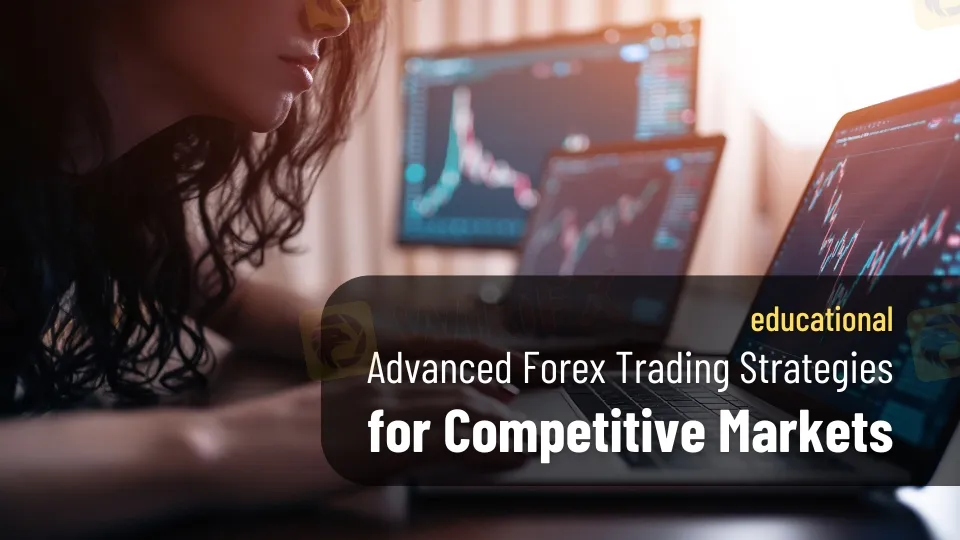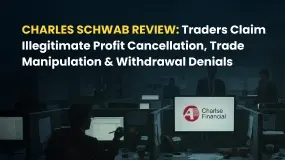简体中文
繁體中文
English
Pусский
日本語
ภาษาไทย
Tiếng Việt
Bahasa Indonesia
Español
हिन्दी
Filippiiniläinen
Français
Deutsch
Português
Türkçe
한국어
العربية
Advanced Forex Trading Strategies for Competitive Markets
Abstract:The foreign exchange (forex) market is the largest and most liquid financial market in the world, with trillions of dollars traded daily. For traders, this presents both opportunities and challenges. While the potential for profit is significant, the competitive nature of the market demands a sophisticated approach. To thrive in this environment, traders must adopt advanced strategies that go beyond the basics. This article explores key techniques, including understanding market trends, mastering technical indicators, trading breakouts and reversals, and building a robust trading plan for consistency.

Advanced Forex Trading Strategies for Competitive Markets
The foreign exchange (forex) market is the largest and most liquid financial market in the world, with trillions of dollars traded daily. For traders, this presents both opportunities and challenges. While the potential for profit is significant, the competitive nature of the market demands a sophisticated approach. To thrive in this environment, traders must adopt advanced strategies that go beyond the basics. This article explores key techniques, including understanding market trends, mastering technical indicators, trading breakouts and reversals, and building a robust trading plan for consistency.
Understanding Market Trends and Price Action Analysis
At the heart of successful forex trading lies the ability to understand and interpret market trends. A trend is the general direction in which a currency pair is moving, and identifying it early can provide a significant edge. Trends can be upward (bullish), downward (bearish), or sideways (ranging).
Price action analysis is a powerful tool for understanding market trends. It involves studying historical price movements to predict future behavior. Unlike indicators that rely on mathematical calculations, price action focuses on raw price data, such as candlestick patterns, support and resistance levels, and chart formations.
For example, a series of higher highs and higher lows typically indicates an uptrend, while lower highs and lower lows suggest a downtrend. Traders can use this information to align their trades with the prevailing trend, increasing the likelihood of success. Additionally, understanding key levels of support and resistance can help traders identify potential entry and exit points.

Mastering Technical Indicators for Forex Trading
While price action provides valuable insights, technical indicators offer a complementary perspective. These tools use mathematical calculations based on price, volume, or open interest to provide additional context about market conditions.
Some of the most widely used technical indicators in forex trading include:
1. Moving Averages (MA): These indicators smooth out price data to identify trends. The Simple Moving Average (SMA) and Exponential Moving Average (EMA) are popular choices. Traders often use crossovers, such as when a short-term MA crosses above a long-term MA, to signal potential buy opportunities.
2. Relative Strength Index (RSI): This momentum oscillator measures the speed and change of price movements. An RSI reading above 70 typically indicates overbought conditions, while a reading below 30 suggests oversold conditions.
3. Bollinger Bands: These bands consist of a moving average and two standard deviations above and below it. They help traders identify volatility and potential breakout points.
4. Fibonacci Retracement: This tool is based on the idea that markets will retrace a predictable portion of a move before continuing in the original direction. Traders use Fibonacci levels to identify potential support and resistance areas.
Mastering these indicators requires practice and a deep understanding of their strengths and limitations. Combining multiple indicators can provide a more comprehensive view of the market, but it's essential to avoid overloading charts with too many tools, as this can lead to analysis paralysis.
Trading Breakouts and Reversals Effectively
Breakouts and reversals are two of the most common trading scenarios in the forex market. A breakout occurs when the price moves beyond a defined support or resistance level, often signaling the start of a new trend. A reversal, on the other hand, occurs when the price changes direction, marking the end of a trend.
Trading Breakouts:
To trade breakouts effectively, traders must first identify key levels of support and resistance. These levels can be based on historical price data, trendlines, or technical indicators. Once a breakout occurs, traders can enter a position in the direction of the breakout, often using a stop-loss order to manage risk.
For example, if the price of EUR/USD breaks above a significant resistance level, a trader might go long, anticipating further upward movement. It's crucial to confirm the breakout with volume or momentum indicators, as false breakouts are common in the forex market.
Trading Reversals:
Reversals can be more challenging to trade, as they require identifying the end of a trend before it becomes apparent. Traders often use technical indicators like the RSI or MACD to spot potential reversals. Additionally, candlestick patterns, such as the engulfing pattern or doji, can provide early signals of a trend change.
For instance, if the price of GBP/USD has been in a strong uptrend but shows signs of weakening momentum, a trader might look for confirmation of a reversal before entering a short position.
Building a Forex Trading Plan for Consistency

Consistency is the hallmark of successful forex traders. To achieve this, traders must develop a comprehensive trading plan that outlines their strategy, risk management rules, and psychological approach.
Key Components of a Trading Plan:
1. Strategy: Define the trading strategies you will use, such as trend following, breakout trading, or scalping. Specify the timeframes you will trade and the indicators you will rely on.
2. Risk Management: Determine how much capital you are willing to risk on each trade. A common rule is to risk no more than 1-2% of your trading account on a single trade. Set stop-loss and take-profit levels to manage risk and lock in profits.
3. Entry and Exit Rules: Establish clear criteria for entering and exiting trades. This could include specific technical indicators, price levels, or candlestick patterns.
4. Psychological Discipline: Trading can be emotionally challenging, especially during periods of loss. Develop a mindset that allows you to stick to your plan and avoid impulsive decisions.
5. Review and Adaptation: Regularly review your trading performance to identify strengths and weaknesses. Adapt your plan as needed to reflect changing market conditions or personal growth as a trader.
By following a well-defined trading plan, traders can reduce emotional decision-making and increase their chances of long-term success.
Conclusion
The forex market's competitive nature demands a disciplined and strategic approach. By understanding market trends, mastering technical indicators, effectively trading breakouts and reversals, and building a robust trading plan, traders can navigate the complexities of the forex market with confidence. While no strategy guarantees success, combining these advanced techniques with consistent practice and continuous learning can significantly enhance your trading performance.
Whether you're a seasoned trader or just starting, these strategies provide a solid foundation for achieving your financial goals in the dynamic world of forex trading.

Disclaimer:
The views in this article only represent the author's personal views, and do not constitute investment advice on this platform. This platform does not guarantee the accuracy, completeness and timeliness of the information in the article, and will not be liable for any loss caused by the use of or reliance on the information in the article.
Read more

Charles Schwab Review: Traders Claim Illegitimate Profit Cancellation, Trade Manipulation & More
Have you been lured into the Charles Schwab app for trading on the back of outrageous profit claims by the broker? Did you fail to receive any of these? Does the broker deny withdrawals every time you request and cancel your forex trading account? Have you been victimized financially by its trade manipulation? Act before you are left with a NIL balance in your account. Many traders have questioned Charles Schwab customer service and many other operational executives for the aforementioned illegitimate trading activities. In this Charles Schwab review article, we have shared some of their comments. Read on!

AMP Futures Exposed: Traders Raise Alarms Over Illegitimate Account Blocks & Bad Customer Service
Has AMP Futures blocked your forex trading account? Does it fail to provide any explanation for this act? Do you face issues concerning deposits to your AMP Futures account? Is the customer service non-existent for any trading query you raise with it? You are not alone! Many traders have been facing these issues upon AMP Futures login. Some of them have commented on AMP Futures review platforms. In this article, we have shared some reviews that you can look at. Read on!

FXGlory Review: Vanishing Profits, Capital Scams & Withdrawal Charges Keep Annoying Traders
Does FXGlory remove all your forex trading account balances upon fund withdrawal requests? Or do you witness incorrect trading account balances after fund withdrawals? Does the Saint Lucia-based forex broker charge you for fund withdrawals? All these and many more scam-related complaints have been filed against the forex broker. In this FXGlory review article, we will discuss several complaints. Read on!

PINAKINE Broker Review: A Complete Look at Its Services and Risks
Finding a trustworthy broker from the huge and often confusing world of online trading options is one of the biggest challenges a trader faces. In this competitive market, PINAKINE Liquidity Limited has appeared, getting attention with promises of high leverage and zero-commission trading. However, a closer look shows important factors that every potential client must think about before investing. The most important thing to consider with PINAKINE is that it has no regulation. This fact completely changes how risky the broker is and has major effects on how safe your investments will be. This review gives a complete and fair examination based on information available to the public. We will break down its services, trading conditions, platform technology, and the possible risks involved, helping you make a fully informed decision.
WikiFX Broker
Latest News
Stonefort Broker Review 2025: Legit or Risky? A Complete Analysis
CHINA BEST Broker Review: Regulation and Risks
Uniglobe Markets Review 2025: A Safe Broker or a High-Risk Scam?
Chicago Fed's Goolsbee says he's cautious about further rate cuts during shutdown
These Are Europe's Top Economies By Projected 2026 GDP
Quantower Review 2025: User Reviews and Complaints in India
TD Markets Exposed: Price Manipulation, Withdrawal Issues & False Promises Hurt Traders
Bank of England holds rates steady in narrow vote ahead of Autumn Budget
BingX Review: Traders Angry Over Withdrawal Denials, Account Blocks & More
Stonefort Securities Review: A Fair Look at Safety, Rules, and What Traders Say
Currency Calculator




